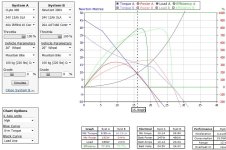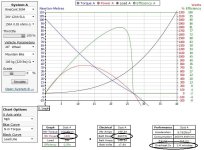Yeah, deep sand can really strain and heat a hub motor. The quickest I ever melted motors, it was riding with the rim underground. Not enough power to handle the resistance of that buried wheel.
No coincidence the edgerunner, ODK, and others that look exactly like a bike run a 20" wheel hubmotor. Well, those that aren't already moving on to a mid drive anyway.
Also no coincidence that my latest street bike build takes advantage of the 20" hub motor. Thanks John, I knew you were right all along. I nearly went 20" on the last bike, but pure laziness made me keep it 26". Mostly because of not wanting to bother with re lacing my 5000 series motors. And, I needed to do a few thousand miles of test riding the EBK stuff last summer. I'm still sold on 26" wheels for off road, riding around on rock staircases.
Next, on to road testing the same motor kit, on a 20" rear wheel cargo bike. Already obvious it runs better, but won't be doing the over heat test up the mountain till next spring, when it gets warm again.

Back on topic, its a 500w rated motor. But with 22 amps controller and 48v (56.4v top of charge) it runs about 1000w peak briefly. Because of the slow wind, it only runs more like 400- 600w on full speed flat ground cruise of 20 mph. So not much risk of overheat with this combo.
But really, this frame deserves a 50 mph motor.

Backing up to Dark Angels post about my "4000w" race experience. I was exiting those corners above 25 mph. But with no way to measure it, I'm still pretty sure that I was making 1000-2000w of heat for that brief moment exiting the corners. Then by 45 mph on the straights, the motor was running much more efficient, and likely only making 1000w of heat. Ever put your hand on a space heater? Imagine one inside your hub. This 500w rated motor stood somewhere between 3000-4000w of input to the controller for more than one second. But it was not lasting long being used at that level. I don't know what my one mile lap time was, but 11 laps did er in.
I have melted down a 500w geared motor, 10t ,on 1200w potential. (26" wheel) But it took a steep hill 3 miles long, and a trailer full of water to make that happen. 450 pounds of total weight. The motor was stalled down to 6 mph when she blew. So that test obviously had too much weight for the motor, and power level. it's possible the motor could have done it with more power, but more likely what was needed was a 20" wheel.

The exact same test, using identical controller, but a 28mm dd motor passed with flying colors. Oh, it was plenty hot at the top of the mountain, but opening the motor later revealed shiny golden windings. The geared motor had black cooked windings, and the halls had actually melted to the point of grinding to tiny pieces in the can.




